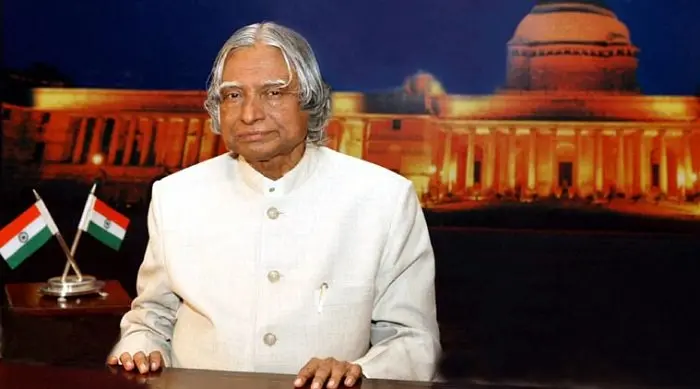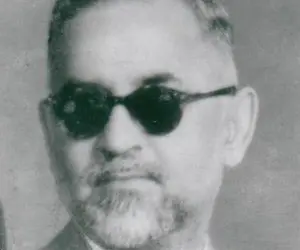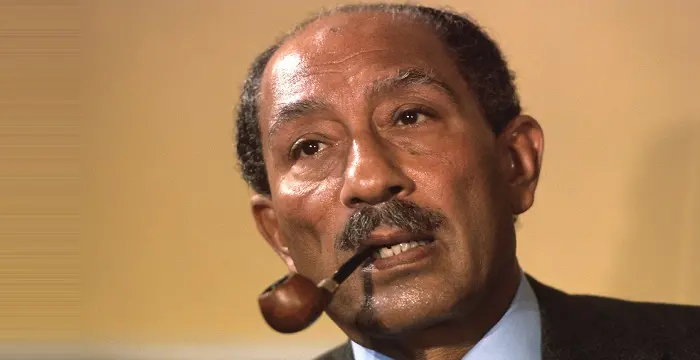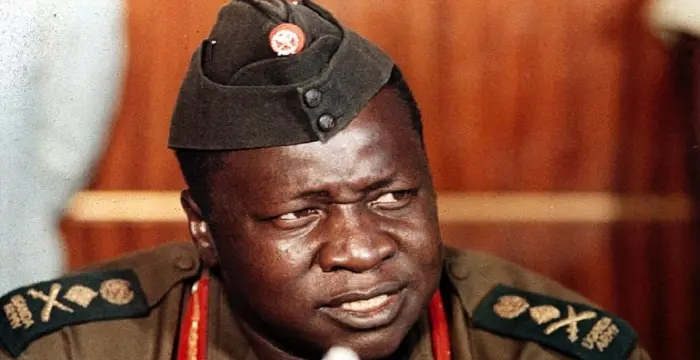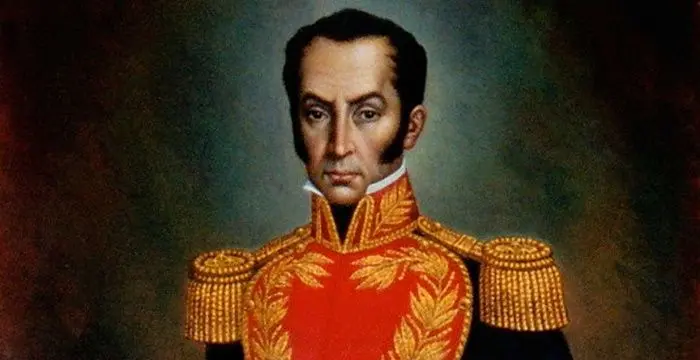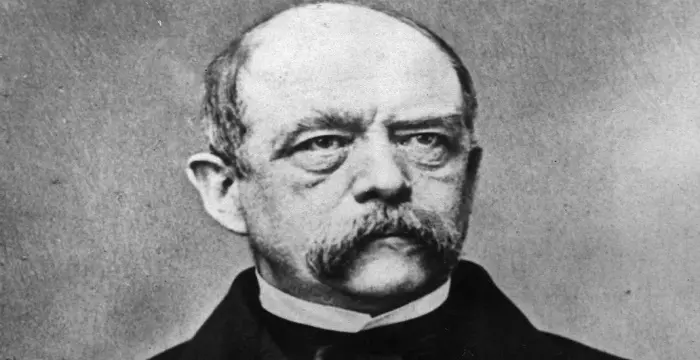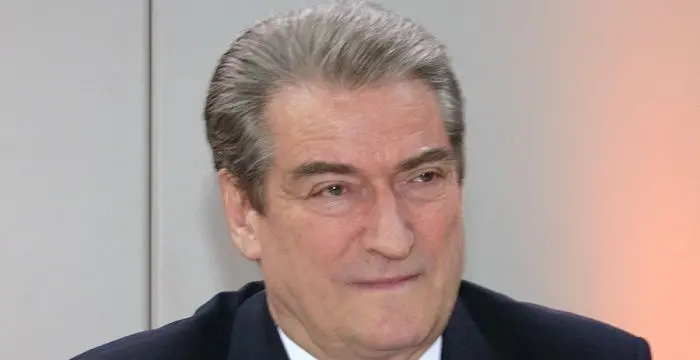
Dr Zakir Husain - Former President of India, Birthday and Childhood
Dr Zakir Husain's Personal Details
Dr Zakir Husain was the third President of Independent India
| Information | Detail |
|---|---|
| Birthday | February 8, 1897 |
| Died on | May 3, 1969 |
| Nationality | Indian |
| Famous | Leaders, Political Leaders, Presidents, Former President of India |
| Spouses | Shah Jahan Begum |
| Birth Place | Hyderabad, India |
| Religion | Muslim |
| Gender | Male |
| Father | Fida Husain Khan |
| Mother | Naznin Begum |
| Sun Sign | Aquarius |
| Born in | Hyderabad, India |
| Famous as | Former President of India |
| Died at Age | 72 |
// Famous Former President of India
Pratibha Patil
Pratibha Patil is an Indian politician who served as the 12th President of the Republic of India. Check out this biography to know about her childhood, family life, achievements and fun facts about her life.
A.P.J. Abdul Kalam
A.P.J. Abdul Kalam, the 11th President of India, is also popularly known as the Missile Man. Check out this biography to know about his childhood, family life, achievements and other facts related to his life.
Rajendra Prasad
Dr Rajendra Prasad served as the first President of Independent India. This biography offers detailed information about his childhood, works, activities and timeline.
Dr Zakir Husain's photo
Who is Dr Zakir Husain?
Dr Zakir Husain was the third President of India and the first Muslim to occupy that post. He was a renowned educationist and intellectual and his contribution in the development of modern India through education is invaluable. From young age, Zakir Husain developed a fascination for politics which he strived to fulfil through education. He slowly and steadily climbed up the social ladder as an educationist and soon became one of the most prominent educational thinkers and practitioners of modern India. Husain strongly believed in the fact that national renaissance could not be attained through active politics all alone. He understood the importance that education would play and thus, indulged himself completely in it. For 22 years, he served as Vice Chancellor of Jamia Milia Islamia, making it one of the most distinguished centres of learning. He spent his entire life working for the cause of education and value of secularism. For his services to the country he was awarded the Bharat Ratna, India's highest national honour.
// Famous Leaders
Edi Rama
Edi Rama is the current Prime Minister of Albania. Check out this biography to know about his childhood, life, achievements, works & timeline.
Tecumseh
Tecumseh was a Native American leader of the Shawnee clan. This biography profiles his childhood, life and timeline.
Khalifa bin Zayed Al Nahyan
Sheikh Khalifa bin Zayed Al Nahyan is the current President of the United Arab Emirates (UAE). Check out this biography to know about his birthday, childhood, family life, achievements and fun facts about him.
Childhood & Early Life
Zakir Husain was born to Fida Husain Khan and Naznin Begum on February 8, 1897, in Kaimganj, Farrukhabad. His family, which originally was based in Hyderabad, had migrated to Kaimganj. He was the third of the seven sons born to the couple.
His early years were full of tragic episodes, as his father died when young Husain was merely ten years of age. Within three years, his mother too passed away leaving Husain and his six siblings orphaned.
He completed his early education from Islamia High School in Etawah after which he enrolled at the Anglo Muhammadan Oriental College, which is now popular by the name of Aligarh Muslim University.
It was while at college that he developed a fascination and bent for politics that shaped the future course of his life. At college, he served as a prominent student leader. In 1918, he passed his B.A. Honors and joined M.A., but the Khilafat and Non-Co-operation Movement led by Mahatama Gandhi, inspired him to leave the government administered college.
Career
In 1920, he led a small group of students and teachers and together they founded the National Muslim University at Aligarh in October 1920. Five years later, they shifted the university to Karol Bagh before finally shifting it to Jamia Nagar in New Delhi, where it eventually was re-christened as Jamia Milia University.
For two years, from 1920 to 1922, he took up the position of a teacher at Jamia Milia University. However, his deep embedded interest in education invoked yet again and he moved to Germany to gain his PhD degree in Economics from the Frederick William University of Berlin, which he eventually bagged in 1926.
It was in Germany that he came out with a collection of the best works of the greatest Urdu poet Mirza Assadullah Khan ‘Ghalib’.
Upon returning to India, while other political bigwigs actively involved themselves in politics and Mahatama Gandhi’s Swaraj and Civil Disobedience Movement, he took a different approach and aimed to contribute in the freedom struggle by using education as the chief tool.
In 1927, He took over as the head of Jamia Milia Islamia University, which had steeply declined in popularity and was facing the threat of closure due to financial constraints. He aimed to revive the university.
For the next twenty-two years, he tirelessly worked uplifting the academic and managerial standard of the university. It was under his leadership that the educational institute not just managed to stay afloat, but contributed in the Indian struggle for freedom from the British Rule.
The educational institute under his leadership stuck to its objective of spreading education among the masses. He strongly believed in the fact that national renaissance could not just be gained through active politics all alone. Reformative education would play a dominant role as well.
As an educator and teacher, he propagated the teaching of Mahatma Gandhi and Hakim Ajmal Khan and experimented with value-based education. No sooner, he became one of the most celebrated educational thinkers of the country
He thence became an active member of initializing several educational reform movements in India. It was due to his constant and untiring efforts that he gained appreciation from arch political rivals like Mohammad Ali Jinnah as well.
In 1937, when Congress won a majority and successfully formed an interim government, a national educational conference was called upon to establish a national policy of education. He along with Gandhi supported a work-centred education instead of the book-centred one.
On October 23, 1937, he was elected as the Chairman of the Education Committee. His work involved formulating a scheme of basic education as discussed in the conference. He submitted his report on December 1937.
In 1948, soon after India gained independence, he became the Vice Chancellor of the Aligarh Muslim University, which faced a crisis situation, as some of its teachers were actively involved in the partition of the country and vouched their support for creation of a separate state of Pakistan.
Following his term as a Vice Chancellor, he was nominated to the Upper House of the Parliament in 1956. However, just after a year of being a Rajya Sabha member, he was appointed as the Governor of State of Bihar, a position he served for five years, from 1957 to 1962.
In 1962, he was appointed as the Vice President of India. He held the profile for a full five year term, before being elected to the chair of the President of India on May 13, 1967. With this, he created history by being the first Muslim to occupy such a prestigious post.
During his presidential tenure, he marvelled all with his gentleness, courteousness and sense of humanity. He was kind and tender to all irrespective of their social, political and economic status. He led four state visits to Hungary, Yugoslavia, USSR and Nepal.
Major Works
He not only founded Jamia Milia Islamia University but served as its Vice Chancellor as well. He has contributed so much to the institution that the history of the two has become inseparable and identical
Awards & Achievements
In 1954, he was awarded Padma Vibhushan
In 1963, he was conferred with India’s highest national honour, Bharat Ratna.
Personal Life & Legacy
Following the tradition of early marriage, he married at the age of 18 in 1915 to Shah Jahan Begum. The couple was blessed with two daughters, Sayeeda Khan and Safia Rahman.
His grandson, Salman Khurshid, took forward his political legacy by serving as a Congress politician. He even took up the profile of the Foreign Minister of India in the former government.
He breathed his last on May 3, 1969 thus becoming the first Indian President to die in office. He was buried on the campus of Jamia Milia Islamia in New Delhi, alongside his wife.A grand mausoleum was constructed in Jamia Milia Islamia in the honor of his contributions and works. The greatest contribution he made in his life also serves as the biggest example of a legacy of his work which runs till date in the form of Jamia Milia Islamia, which has become one of the most distinguished centres of learning in modern India.
// Famous Political Leaders
Edi Rama
Edi Rama is the current Prime Minister of Albania. Check out this biography to know about his childhood, life, achievements, works & timeline.
Khalifa bin Zayed Al Nahyan
Sheikh Khalifa bin Zayed Al Nahyan is the current President of the United Arab Emirates (UAE). Check out this biography to know about his birthday, childhood, family life, achievements and fun facts about him.
Leo Varadkar
Cam Leo Varadkar is the current Taoiseach—the Prime Minister—of the Republic of Ireland. Check out this biography to know about his childhood, family life, achievements and other facts about his life.
Dr Zakir Husain's awards
| Year | Name | Award |
|---|---|---|
Other | ||
| 0 | Padma Vibhushan (1954) | |
| 0 | Bharat Ratna (1963) | |
Dr Zakir Husain biography timelines
- // 8th Feb 1897Zakir Husain was born to Fida Husain Khan and Naznin Begum on February 8, 1897, in Kaimganj, Farrukhabad. His family, which originally was based in Hyderabad, had migrated to Kaimganj. He was the third of the seven sons born to the couple.
- // 1915Following the tradition of early marriage, he married at the age of 18 in 1915 to Shah Jahan Begum. The couple was blessed with two daughters, Sayeeda Khan and Safia Rahman.
- // 1918It was while at college that he developed a fascination and bent for politics that shaped the future course of his life. At college, he served as a prominent student leader. In 1918, he passed his B.A. Honors and joined M.A., but the Khilafat and Non-Co-operation Movement led by Mahatama Gandhi, inspired him to leave the government administered college.
- // 1920In 1920, he led a small group of students and teachers and together they founded the National Muslim University at Aligarh in October 1920. Five years later, they shifted the university to Karol Bagh before finally shifting it to Jamia Nagar in New Delhi, where it eventually was re-christened as Jamia Milia University.
- // 1920 To 1926For two years, from 1920 to 1922, he took up the position of a teacher at Jamia Milia University. However, his deep embedded interest in education invoked yet again and he moved to Germany to gain his PhD degree in Economics from the Frederick William University of Berlin, which he eventually bagged in 1926.
- // 1927In 1927, He took over as the head of Jamia Milia Islamia University, which had steeply declined in popularity and was facing the threat of closure due to financial constraints. He aimed to revive the university.
- // 1937In 1937, when Congress won a majority and successfully formed an interim government, a national educational conference was called upon to establish a national policy of education. He along with Gandhi supported a work-centred education instead of the book-centred one.
- // 1948In 1948, soon after India gained independence, he became the Vice Chancellor of the Aligarh Muslim University, which faced a crisis situation, as some of its teachers were actively involved in the partition of the country and vouched their support for creation of a separate state of Pakistan.
- // 1954In 1954, he was awarded Padma Vibhushan
- // 1957 To 1962Following his term as a Vice Chancellor, he was nominated to the Upper House of the Parliament in 1956. However, just after a year of being a Rajya Sabha member, he was appointed as the Governor of State of Bihar, a position he served for five years, from 1957 to 1962.
- // 1963In 1963, he was conferred with India’s highest national honour, Bharat Ratna.
- // 1967In 1962, he was appointed as the Vice President of India. He held the profile for a full five year term, before being elected to the chair of the President of India on May 13, 1967. With this, he created history by being the first Muslim to occupy such a prestigious post.
- // 3rd May 1969He breathed his last on May 3, 1969 thus becoming the first Indian President to die in office. He was buried on the campus of Jamia Milia Islamia in New Delhi, alongside his wife.A grand mausoleum was constructed in Jamia Milia Islamia in the honor of his contributions and works. The greatest contribution he made in his life also serves as the biggest example of a legacy of his work which runs till date in the form of Jamia Milia Islamia, which has become one of the most distinguished centres of learning in modern India.
// Famous Presidents
Khalifa bin Zayed Al Nahyan
Sheikh Khalifa bin Zayed Al Nahyan is the current President of the United Arab Emirates (UAE). Check out this biography to know about his birthday, childhood, family life, achievements and fun facts about him.
Anwar Sadat
Anwar Sadat was the third President of Egypt and has been awarded the Nobel Prize for his peace initiatives. To know more about his childhood, career, profile and timeline read on the following biography.
Idi Amin
A Ugandan dictator, Idi Amin is remembered for his brutal regime and crime against humanity. Check this biography to know in details about his life, childhood, profile and timeline.
Simon Bolivar
Simón Bolívar was a Venezuelan military leader who was instrumental in independence of several Latin American countries from the Spanish rule. This biography profiles his childhood, life, achievements and timeline.
Otto von Bismarck
Otto von Bismarck served as the Chancellor of Germany and the Prime Minister of Prussia. He unified the German states into a powerful German empire. This biography profiles his childhood, political career, life, achievements and timeline.
Sali Berisha
Sali Berisha is an Albanian politician who served as the President and the Prime Minister of Albania. Check out this biography to know about his childhood, life, achievements, works & timeline.
Dr Zakir Husain's FAQ
What is Dr Zakir Husain birthday?
Dr Zakir Husain was born at 1897-02-08
When was Dr Zakir Husain died?
Dr Zakir Husain was died at 1969-05-03
Which age was Dr Zakir Husain died?
Dr Zakir Husain was died at age 72
Where is Dr Zakir Husain's birth place?
Dr Zakir Husain was born in Hyderabad, India
What is Dr Zakir Husain nationalities?
Dr Zakir Husain's nationalities is Indian
Who is Dr Zakir Husain spouses?
Dr Zakir Husain's spouses is Shah Jahan Begum
What is Dr Zakir Husain's religion?
Dr Zakir Husain's religion is Muslim
Who is Dr Zakir Husain's father?
Dr Zakir Husain's father is Fida Husain Khan
Who is Dr Zakir Husain's mother?
Dr Zakir Husain's mother is Naznin Begum
What is Dr Zakir Husain's sun sign?
Dr Zakir Husain is Aquarius
How famous is Dr Zakir Husain?
Dr Zakir Husain is famouse as Former President of India

